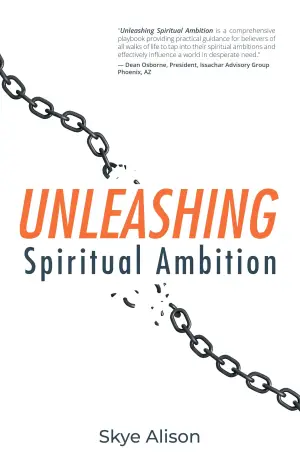A Journey into the Heart of Creation: A Review of "Soul Machine" by Jordana Globerman
From the moment I stumbled upon Jordana Globerman’s debut graphic novel, Soul Machine, I knew I had found something special. The cover, with its ethereal imagery and philosophical flair, beckoned me like a siren amidst the chaos of my TBR pile. As someone drawn to the intertwining of spirituality and storytelling, I was instantly intrigued by its promise to explore profound questions about the essence of existence. Little did I know, this stunning narrative would weave its way into my soul as well.
At its core, Soul Machine follows Chloe and her sister Lacey, two artisans of a disappearing craft—handmade souls spun from a mystical substance called ‘breth’. Their pastoral existence is shattered when MCorp introduces synthetic Digibreth, driving their trade to the brink and forcing Chloe to venture into the oppressive city to regain what has been lost. What unfolds is a rich tapestry of corporate greed, underground spirituality, and familial ties that challenge the very fabric of their identities.
Globerman deftly navigates themes of belief and existence, posing the compelling question: "What makes a soul real—material, intention, or belief?" As Chloe ventures deeper into a world rife with exploitation and self-discovery, her journey becomes a metaphor for the struggle to belong—not only to a family but to a broader metaphysical lineage. The relationship between Chloe and Lacey embodies this struggle beautifully, capturing the tension between tradition and innovation. I found myself reflecting on my own bonds with family, feeling the ache and hope etched into their portrayals.
What struck me most was the stunning artwork. Each panel pulses with emotion and atmosphere, using a monochromatic palette that shifts and swirls with the narrative’s tone. It’s as if the very essence of each scene breathes and speaks, transforming visual storytelling into a poetic dance. In moments of suspense, I felt my heart race—especially during scenes where ominous giant insects loomed over the characters, reflecting the underlying dread of a world at war with itself.
Globerman’s writing flows like a gentle stream, carrying readers along thought-provoking currents without ever becoming heavy-handed. Phrases like, “Neither of you care about souls … just your own ideologies” resonate powerfully, challenging characters and readers alike to confront their own beliefs. It’s a stark reminder of how often ideology can overshadow empathy, and this clarity hit me right in the gut.
While the lore surrounding soul-weaving can feel more poetic than practical, and at times the stakes may seem abstract, this is what makes Soul Machine a unique experience. It eschews the rigid rules of conventional worldbuilding in favor of a more atmospheric approach, illustrating that sometimes, it’s not the plot that matters but how a story resonates with its audience.
In conclusion, I can wholeheartedly recommend Soul Machine to readers who appreciate graphic novels that beautifully intertwine spirituality, philosophy, and sisterhood. It’s a book that dares to ask big questions and invite you to feel them rather than merely understand them. If you’re open to magic that defies definitions and ready to embark on a soul-weaving journey that lingers after the final page, then this gem should undoubtedly find a place on your shelf. Soul Machine doesn’t just tell a story; it wraps itself around your heart and lingers like a cherished memory—an experience I won’t soon forget.






